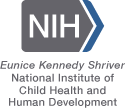Glossary of Key Concepts and Terms
Inscope: Sample persons who are members of the civilian noninstitutionalized US population.
When sample persons become institutionalized, join the military, live outside of the country, or are born or die during the panel, they are considered sample persons for purposes of the survey and are included in MEPS data files with positive person weights. However, no data were collected for the periods they were not inscope and their annual data for variables like health care utilization, expenditures, and insurance coverage reflect only the part of the year they were inscope for the survey. For the identification and proper analytic consideration of persons inscope for only part of the year, please see this AHRQ report. Inscope status is reassessed at each MEPS round.
IPUMS MEPS offers information about inscope status in four variables, each of which refers to a different time period:
- INSCOP: Inscope status for the portion of Round 5/3 that covers the current year
- INSCOP1231: Inscope status on December 31
- INSCOPEV: Whether person was ever inscope during year
- INSCOPRD: Inscope status in current round (round-level variable)
Key: A sample person is "key" if they were a member of a responding NHIS household at the time of the NHIS interview or joined a family associated with such a household after being out-of-scope at the time of the NHIS.
Persons who may have been out-of-scope at the time of the NHIS include newborns and those returning from military service, an institution, or residence in a foreign country. Information about MEPS participants' key status is captured in the IPUMS MEPS variable KEYNESS.
NOTE: Because key status is set at entry into MEPS, a person might be key even though not part of the civilian, noninstitutionalized portion of the US population.
Eligible: Sample persons who were members of the civilian noninstitutionalized population for at least one day of the year.
Eligibility pertains to whether or not data were to be collected for that person. All of the key, inscope persons of a sampled RU were eligible for data collection. The only non-key persons eligible for data collection were those who happened to be living in an RU with at least one key, inscope person; their eligibility continued only for the time that they were living with at least one such person. The only out-of-scope persons eligible for data collection were those who were living with Key in-scope persons, again only for the time they were living with such a person; only military persons can meet this description.
IPUMS MEPS offers information about eligibility status in two variables:
- ELIG1231: Eligibility status on December 31
- ELIGRD: Eligibility status in current round (round-level variable)
Disposition: A person's disposition indicates the reasons for either continuing or terminating data collection for each person in the MEPS.
Using the round-level Person Disposition Status variable (PSTATSRD), one could identify persons who moved during the reference period, died, were born, institutionalized, or who were in the military.
SAQ eligible: Sample persons who did not have a status of deceased or institutionalized, did not move out of the U.S. or to a military facility, were not a non-response at the time of the Round 2 or Round 4 interview date, and was were 18 years of age or older.
No RU members added in Round 3 or Round 5 were asked to complete an self-administered questionnaire (SAQ). This information is contained in the IPUMS MEPS variable SAQELIG.
Reporting unit: A group of persons in the sampled dwelling unit (DU) who are related by blood, marriage, adoption, foster care, or other family association.
Each RU was interviewed as a single entity for MEPS. Unmarried college students (less than 24 years of age) who usually live in the sampled household but were living away from home and going to school at the time of the Round 3/1 MEPS interview were treated as an RU separate from that of their parents for the purpose of data collection.
Several IPUMS MEPS variables include information about the reporting unit:
- RULETR (RULETRRD): Reporting unit letter as of December 31 (in current round; round-level variable)
- RUSIZE (RUSIZERD): Reporting unit size as of December 31 (in current round; round-level variable)
- RUCLAS (RUCLASRD): Reporting unit classification as of December 31 (in current round; round-level variable)
- RURSLTRD: Reporting unit result in current round (round-level variable)
Reference person: For each RU, the person who owns or rents the DU is usually defined as the reference person.
For student RUs, the student is defined as the reference person.
IPUMS MEPS offers information about the reference person in two variables:




